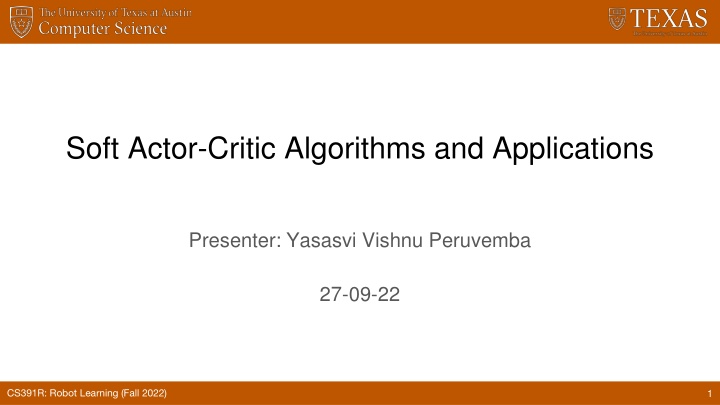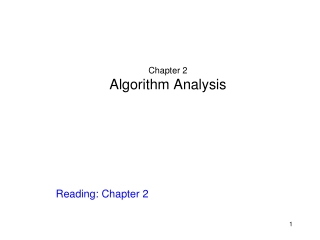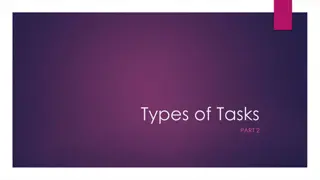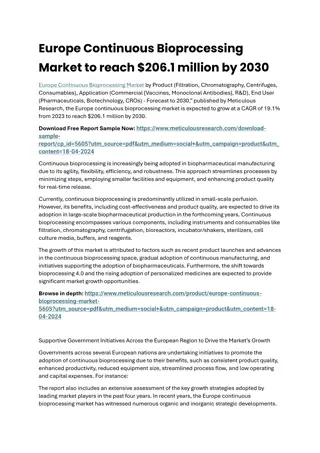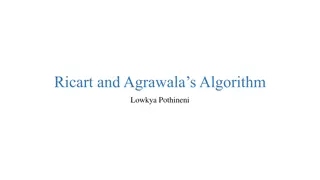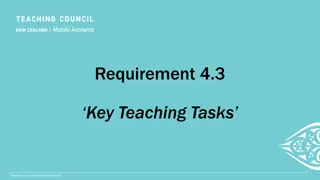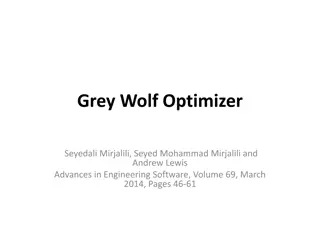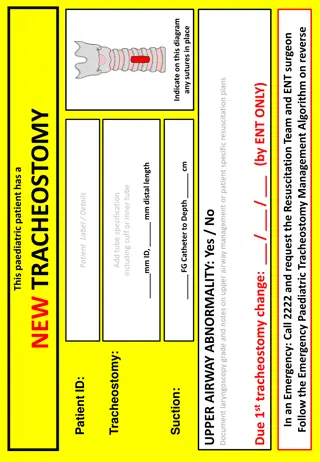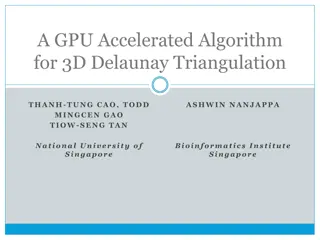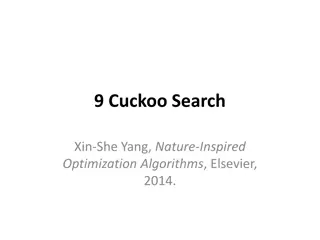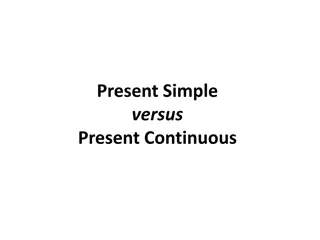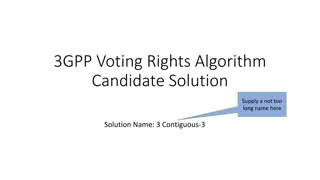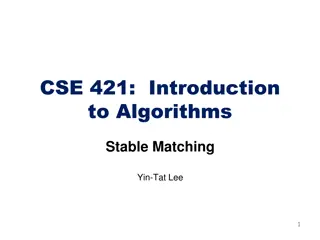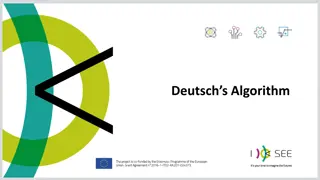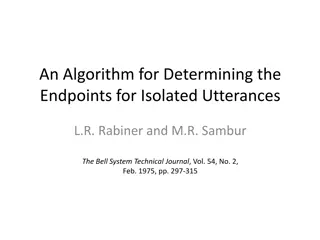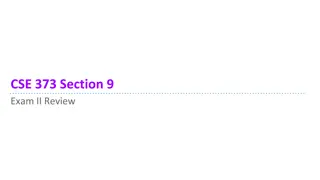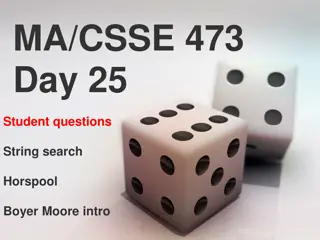Efficient Algorithm for RL Tasks with Continuous Actions
This presentation focuses on creating an efficient algorithm for reinforcement learning tasks involving continuous actions. It discusses the motivation, challenges, related works, and problems faced by prior works in this area.
Download Presentation

Please find below an Image/Link to download the presentation.
The content on the website is provided AS IS for your information and personal use only. It may not be sold, licensed, or shared on other websites without obtaining consent from the author.If you encounter any issues during the download, it is possible that the publisher has removed the file from their server.
You are allowed to download the files provided on this website for personal or commercial use, subject to the condition that they are used lawfully. All files are the property of their respective owners.
The content on the website is provided AS IS for your information and personal use only. It may not be sold, licensed, or shared on other websites without obtaining consent from the author.
E N D
Presentation Transcript
Soft Actor-Critic Algorithms and Applications Presenter: Yasasvi Vishnu Peruvemba 27-09-22 CS391R: Robot Learning (Fall 2022) 1
Motivation and Main Problem Problem : Creating an efficient algorithm for RL tasks that involve continuous actions RL wants the agent to learn a good policy that balances exploitation and exploration. Given a task, it aims to develop the best strategies to complete them successfully. At that time, model-free deep RL algorithms were successful, but were very sample-intensive, and were brittle to changes in hyperparameters. Any efficient RL algorithm brings us closer to better decision making and exploration, a key component for robot autonomy Better RL algorithm -> better decisions in a continuous environment -> better robots! CS391R: Robot Learning (Fall 2022) 2
Related Works (Basis of Framework) Modeling purposeful adaptive behavior with the principle of maximum causal entropy , Ziebart (2010) robust in the face of model and estimation errors acquire diverse behaviours Actor-critic algorithms - (Barto et al., 1983; Sutton & Barto, 1998) - iterates between policy evaluation and improvement - policy and value function optimised jointly On-policy -> policy gradient formulation -> update actor (Peters & Schaal, 2008) Use entropy as regularizer -> (Schulman et al., 2017b, 2015; Mnih et al., 2016; Gruslys et al., 2017) CS391R: Robot Learning (Fall 2022) 3
Related Works (Competing Frameworks) Combining policy gradient and Q-learning , O Donoghue et. al (2016) increase sample efficiency - retain robustness use off-policy samples - higher order variance reduction However, fully off-policy are still more efficient DDPG (Lillicrap et al., 2015) - off-policy actor critic method Deep deterministic policy gradient -> Q-function estimator for off-policy learning Deterministic Actor-Critic - OR - Approximate Q-Learning However, extremely difficult to stabilize and brittle to hyperparameters (shown by Duan et. al.) Performs poorly on complex - high-dimensional tasks - on-policy methods perform better! Maximum Entropy methods - Nachum et al. (2017b) approximate the maximum entropy distribution with a Gaussian Still performs worse than SOTA off-policy algorithms - TD3 (Fujimoto et al., 2018) or MPO (Abdolmaleki et al., 2018) CS391R: Robot Learning (Fall 2022) 4
Problems in Prior Works On-Policy Model-Free Networks These works (on-policy) were very sample - expensive -> relatively simple tasks can require millions of steps of data collection. More complex task -> more samples! Learning rates, exploration constants need to be tuned carefully for each problem! Simply combining off-policy and high-dimensional non-linear approximators like Neural Networks result in challenges for stability and convergence. More issues with continuous spaces! Previously defined SAC (Haarnoja et. al, 2018c) suffers from brittleness in the temperature hyperparameter - which is important in maximum entropy RL frameworks. CS391R: Robot Learning (Fall 2022) 5
Problem Setting Learning maximum entropy policies in continuous action spaces It is framed as an MDP (Markov Decision Process) - State - S Action space - A State transition probability - p - S x S x A -> [0, inf) Reward - r (st) , (st, at) -> state and state-action marginals from policy (at|st) The maximum entropy objective CS391R: Robot Learning (Fall 2022) 6
Proposed Approach Use a modified version of Soft policy iteration & prove that it converges For a fixed policy, soft Q-value can be computed iteratively using the Bellman backup operator Policy update toward exponential of soft Q-function (using KL Divergence) These were for fixed tabular cases, for continuous spaces, we use an approximator for Q-values. CS391R: Robot Learning (Fall 2022) 7
Proposed Approach (..contd) A NN for the Q-value approximator (?) and another to get the mean and covariance to build the guassian for the policy (?) The soft Q-function parameters can be trained to minimize the soft Bellman residual Now, to train the policy gradient -> the typical solution -> likelihood ratio gradient estimator Target density is Q-function! which is an NN and easily differentiable, use a reparameterizatrion trick - sample an action using the state & an input noise vector - CS391R: Robot Learning (Fall 2022) 8
Proposed Approach (..contd) Haven t seen anything about ? - the temperature hyperparameter Tuning it for each task is difficult -> formulate a way to learn this during training! Constrained optimization problem - average entropy is constrained Since this is an MDP, the policy at time t, only affects future objective values, hence, we can recursively optimize this in a top-down approach (like dynamic programming). CS391R: Robot Learning (Fall 2022) 9
Algorithm In practical usage, they use 2 soft Q-functions - in order to speed up training. Pick the min of the two in stochastic gradient and policy gradient Minimize the dual objective by approximating the dual gradient descent - alternates between optimising the Lagrangian and taking the gradient step. Assumption : A truncated version of the above that performs incomplete optimization converges under convexity. - But this does not hold for non-linear approximators like NNs used! Final algorithm alternates between collecting experience and updating its function approximators. Collect experience in replay pool - Use it to update policy, Q-function and temperature. CS391R: Robot Learning (Fall 2022) 10
Algorithm CS391R: Robot Learning (Fall 2022) 11
Theory Assuming that the action space is bounded is fairly realistic! CS391R: Robot Learning (Fall 2022) 12
Hyperparameters used (..others) CS391R: Robot Learning (Fall 2022) 13
Experimental Setup OpenAI gym benchmark suite, tasks - Hopper-v2, Walker2d-v2, HalfCheetah-v2, Ant-v2, Humanoid-v2 Humanoid (rllab). Compared against TD3, PPO (on-policy), DDPG (off-policy) Some real-life experiments as well - Minotaur Robot (locomotion) & Dexterous Hand Manipulation They compare the rewards that are returned by the best exploration after a given number of steps. For each environment, they compare the returns gained through meaningful exploration using the trained policies. CS391R: Robot Learning (Fall 2022) 14
Experimental Results (Comparisons) Sample efficiency and final performance of SAC on these tasks exceeds the state-of-the-art CS391R: Robot Learning (Fall 2022) 15
Experimental Results (real-life robots) SAC on Minitaur - Testing Minotaur robot, a small-scale quadruped with eight direct-drive actuators The action space are the swing angle and the extension of each leg The training process runs on a workstation - downloads the latest data from the robot - uploads the latest policy to the robot Learns to walk from 160k environment steps ~ 2 hours https://sites.google.com/view/sac-and-applications/ It was trained on a flat terrain, but it generalizes well to unexpected terrains. CS391R: Robot Learning (Fall 2022) 16
Discussion of Results Here are the key takeaways from the experiments - DDPG fails to make any progress on Ant-v1, Humanoid-v1, and Humanoid (rllab) SAC also learns considerably faster than PPO. SAC performs comparably to the baseline methods. PPO learns slowly due to large batch sizes - to learn more stably on higher dimensional tasks The results indicate that the automatic temperature tuning scheme works well across all the environments! CS391R: Robot Learning (Fall 2022) 17
Critique In general, the concept is mathematically sound, and according to experiments provides good results, but here are a few things that are possibly not so good about it - They introduce another hyperparameter target entropy - to tune the temperature, which by itself needs to be tuned for each task. While computationally attractive, Gaussian policies have limited modeling expressivity. Real world robotics - actions with bounded joint angles due to physical constraints - a Beta policy has been shown to converge faster CS391R: Robot Learning (Fall 2022) 18
Future Work Several works have aimed to improve upon the concept provided within SACs, like - Priority based selection of samples from the replay buffer Mixing Prioritized Off-Policy Samples with On-Policy Experience - Chayan et. al. Improving Exploration in Soft-Actor-Critic with Normalizing Flows Policies - Patrick at. al. Soft Actor-Critic with Advantage Weighted Mixture Policy (SAC-AWMP) - Zhimin et. al. CS391R: Robot Learning (Fall 2022) 19
Summary This research deals with devising a sample efficient model-free algorithm for RL They make use of a maximum entropy framework, introduce a better formulation, prove its convergence and produce results that beat the current state-of-the-art. Prior works were either sample inefficient or suffered brittleness to hyperparameters. They model the tuning of temperature as a constrained optimization problem, which on solving gives the soft policy iteration as well as temperature tuning. This entire approach also is the first off-policy actor-critic method in the maximum entropy framework. They achieve state-of-the-art performance in comparison to popular methods like DDPG and TD3. CS391R: Robot Learning (Fall 2022) 20
